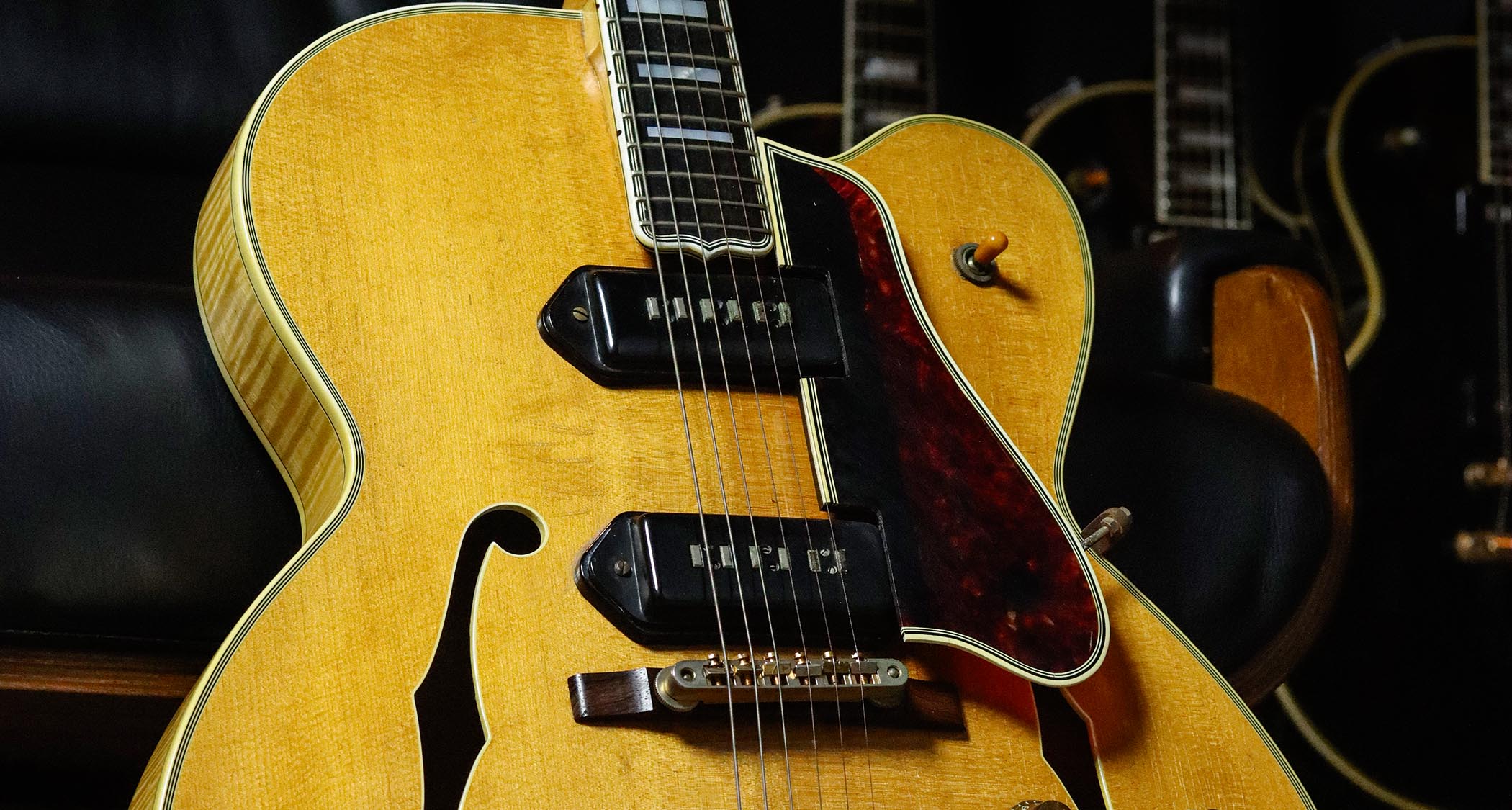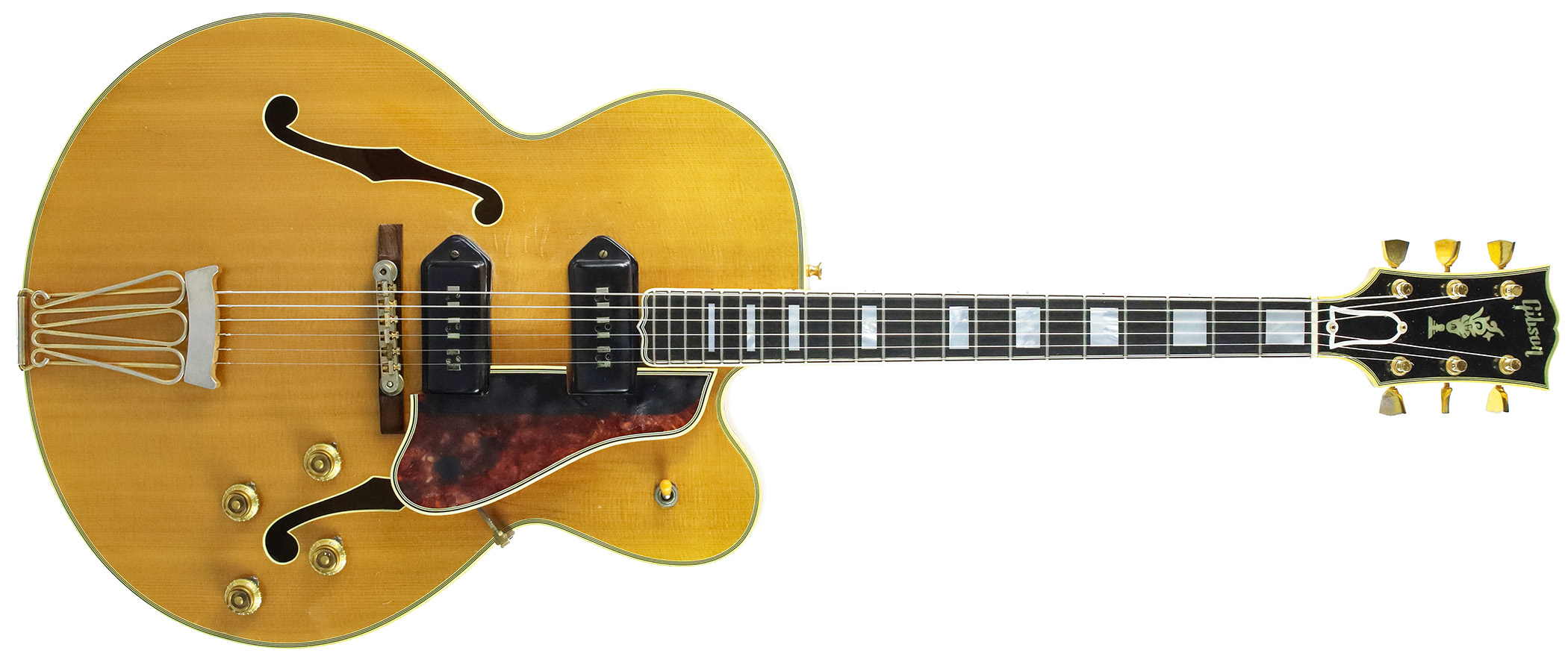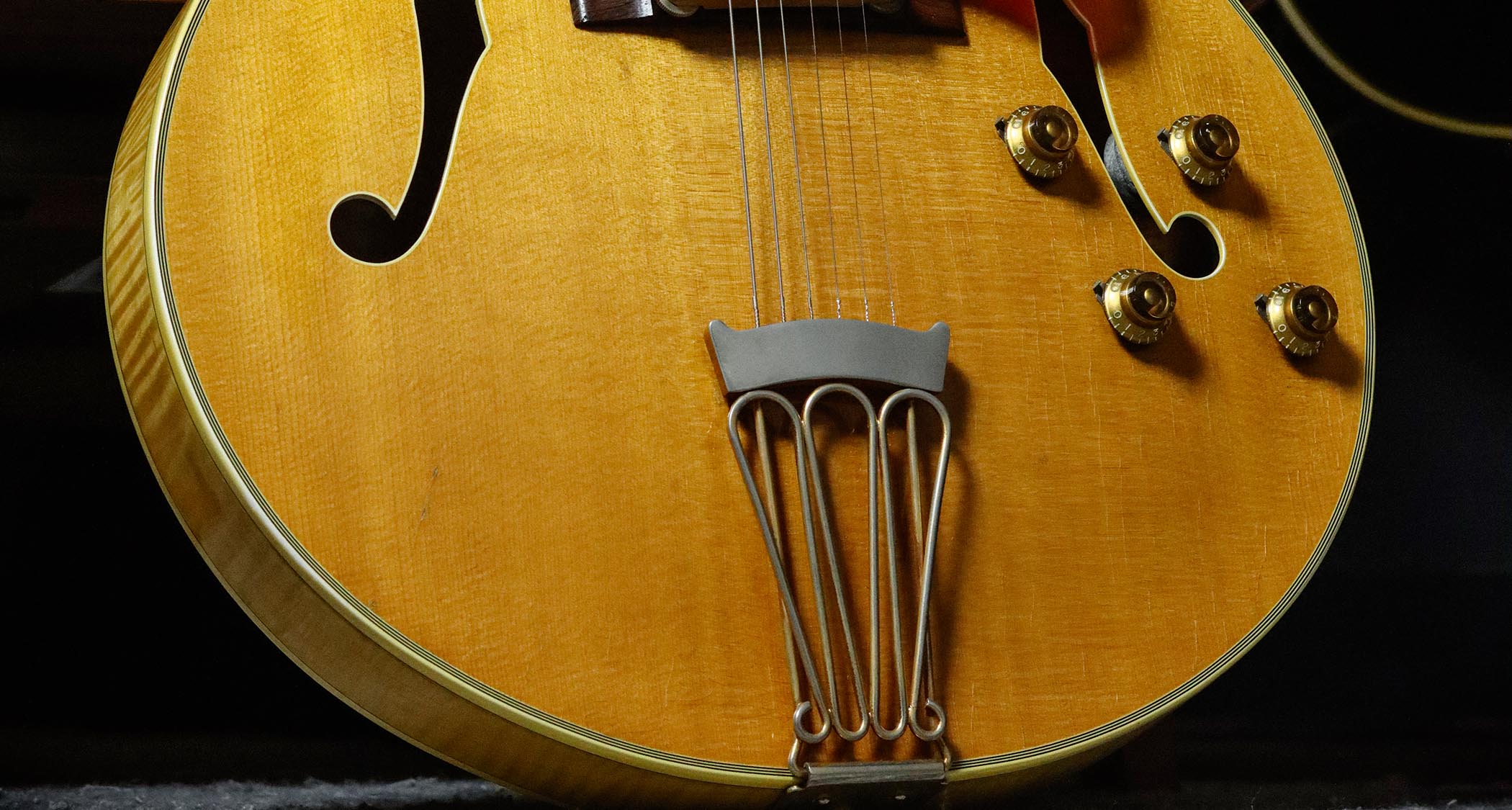
The Goldtop Les Paul and the Les Paul Custom were a significant new direction for a traditional archtop guitar manufacturer like Gibson. The winds of change would soon blow through the company’s hollowbody range, and Gibson asked Nashville studio players Billy Byrd and Hank Garland to collaborate on some new ideas.
“The idea was to provide archtop players with models that felt more compact and comfortable to play, and the resulting ‘thinline’ model was given a name that honored their contributions.
“The Byrdland made its debut at the 1955 NAMM Show alongside two other thinline archtops – the ES-350T and the ES-225. In essence, the Byrdland is a thinner bodied L-5 with a shorter scale length for easy chord stretches and an ABR-1 bridge on a floating wooden base.
“Appointments, like the ‘flowerpot’ headstock logo and extra layers of binding cut into the fingerboard, also lean towards L-5 specs. Then there’s the little point at the end of the fretboard, gold hardware, and multi-layer pickguard binding, plus seven layers of binding around the front of the body and three layers at the back.
“The neck is a two-piece maple construction with a walnut center strip. It is very flamed and there’s an ebony fretboard and a ‘stinger’ on the back of the headstock. The body sides are also very flamey, but the back has bird’s eye figuring, which could be interpreted as a visual pun on the model name.”

“These earlier backs were carved from bookmatched maple blanks with a join running through the center line that lines up perfectly with the neck’s center strip. Gibson retained the 2 ¼-inch body depth through a later switch to laminated maple construction, but Byrdlands always had carved spruce tops. The label inside this example carries an ‘A25’ serial number and the FON [Factory Order Number] corresponds with April of 1957.
“Gibson used Kluson Sealfast tuners, which I think are just about the best ever. They’re unbelievably precise and, unlike regular Klusons, you don’t need to detune and then bring the string back up to pitch. With the Sealfasts, you can detune a tiny bit, pull the string, and it won’t move.”

“Celluloid pickguards are prone to off-gassing. If you leave one of these guitars in a case indefinitely, you’ll open the case one day and the pickguard will have started to disintegrate. Their wood needs fresh air and some humidity or they will fall apart.
“A lot of people don’t give these guitars any credit because of the short scale and narrow neck. This is particularly true of the later version, which had modified humbuckers with narrowed screw spacing. They weren’t the same as the regular Patent Applied For pickups that were installed on other archtops like the ES-175. Similarly, these Alnico V pickups couldn’t be mounted onto an L-5.
“The Alnico V pickups are often called ‘staples’ or (inaccurately) ‘staple P-90s’, and here they have Bakelite dog-ear covers with spacers under both pickups. The way the polepieces are adjusted is interesting because there are tiny screws for each one. When the screws are loosened, you can manipulate the angle of the polepieces to optimize alignment with the strings.”
“The Alnico V was earlier used in the neck position of the Les Paul Custom. Many believe Seth Lover was tasked with designing it because Les Paul was replacing the P-90s in the neck position of his Goldtops with DeArmond Dynasonics. I know of a couple of Goldtop prototypes that were fitted with Alnico Vs at the factory.
“Virtually every professional musician that I deal with, from celebrities to studio players, has a guitar with Alnico Vs. They’re fantastic tools and I greatly prefer these Alnico V Byrdlands to the Patent Applied For version. It’s one of the nicest-sounding guitars for jazz, even without the full body depth of an L-5.
“This guitar is 100 percent original and untouched. The frets are original, with virtually no wear, and all the nibs are there. The playability is lovely because the neck angle is perfect and the bridge doesn’t lean at all. The blonde finish has mellowed very uniformly to a lemony golden haze and the top retains a nice bevel so it hasn’t flattened down and was obviously taken care of. This guitar is a sweetheart.”
- This article first appeared in Guitarist. Subscribe and save.
- Vintage guitar veteran David Davidson owns Well Strung Guitars in Farmingdale, New York.







